Thomas Boswell Watson, Macau
Thomas was born in Haddington on the 30th August1815. He married Elizabeth Stedman. He died in Edinburgh in 1860.
He was the son of James Watson and Janette Watson (nee Skirving). Thomas was the brother of James Lauder Watson, Frederick Lundy Watson and Alexander Scott Watson.

Thomas's birth registration 30th August 1815, Haddington.
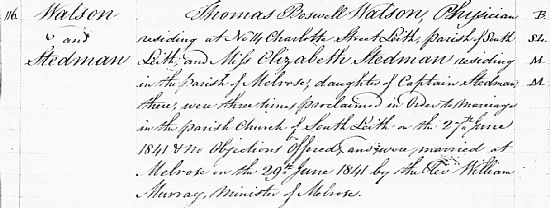
Their marriage record dated 29th June 1841, South Leith.
Thomas Boswell Watson was the brother of Alexander Scott Watson. Thomas had been farming in Poland and probably persuaded Alexander to do the same. When things got uncomfortable there he moved to Macao and years later invited his nephew to join him there. That was Alexander Skirving Watson who gained fame with his pharmacy in Hong Kong and who is described at length in his own section.
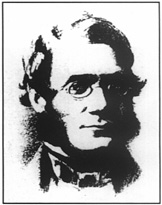
Thomas's name is still known today, but for his art and you can buy sketches and watercolours of his from good dealers. The website linked to below notes :
A Scottish physician, Thomas Boswell Watson, arrived in Macao in 1845, thirty years old and with the fervent intention of settling and practising medicine in this small territory. Besides becoming a doctor, a good friend, and an apprentice to Chinnery, Watson came to be recognized as a particularly gifted painter.
His watercolours and pen and pencil drawings are testimonials of Macanese buildings and sites long demolished or presently transformed beyond recognition. Particularly signficant are the views taken from the terrace of his house in the Praia Grande (Praya Grande) promenade, most probably dated from between 1850 and 1856, when the artist reached an existence of serene happiness, having overcome his financial insecurities, physical problems caused by fragile health and constant intellectual longings for his motherland.
...Despite leaving Macao for Hong Kong in 1856, he would later confess that the best and happiest years of his existence in the Orient had been spent in this Portuguese colony.
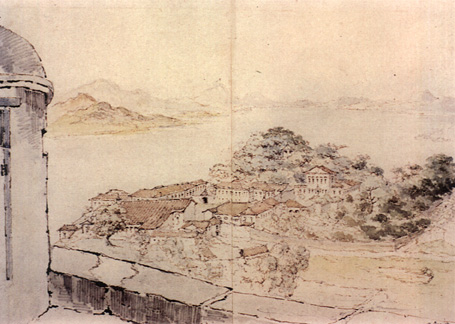
View of Macao from Monte Fortress : 1852
http://www.icm.gov.mo/rc/viewer/20026/1146
The copyright conditions are in Chinese but I take them as being for free, but non-commercial use. http://www.icm.gov.mo/welcome
His mentor in regard to painting, George Chinnery, was also important in the art world and a reference is given under LINKS. Chinnery had in fact been a patient of his.
While his art may be his lasting legacy to many, his intentions were to establish a medical practice in Macao and it is this which indirectly left a far ranging impression on the world through his nephew, Alexander Skirving Watson. But let's first discuss Thomas's situation.
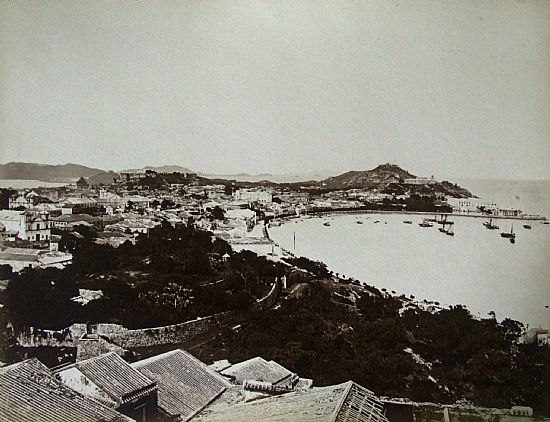
This photo of Macao comes from an old album that I have. Although probably from the early 20th century, it gives a reasonable idea of the town that Thomas would have known.
Wiki gives us further information :
Dr. Thomas Boswell Watson (1815–1860), from Scotland, was the first member of the Watson family to arrive in the Far East, where in 1845 he set up a private practice in Macau, on the southwest coast of China. After selling his practice to a fellow doctor, he moved to Hong Kong in 1856 where he became part owner of the Hong Kong Dispensary, an offshoot of the Canton Dispensary which operated from 1828 to 1858.
Known as the "Big Medicine Shop" (Chinese: 大藥房; Cantonese: Dai Yeuk Fong), the dispensary's main customers were soldiers and sailors. The dispensary was not known as A.S. Watson until 1870, although Alexander Skirving Watson took over in 1858 following management changes.[4] T. B. Watson sent his family back to Scotland in 1857, and he himself followed two years later.
Following the death of Dr T. B. Watson in 1860, the Hong Kong Dispensary was leased to A. S. Watson and two other doctors, and onwards from 1862, the name A.S. Watson featured prominently at the Hong Kong Dispensary.
Another source are the writings of Dan Waters :
The first member of the Watson family to go East was Thomas Boswell (1815 to 1860), a graduate of Edinburgh University, who set up in private practice (previously owned by Doctor Anderson) in Macau in 1845. He was a physician and his wife, Elizabeth (nee Stedman), joined him the following year.
Watson was also an amateur artist and a friendship with the famous George Chinnery lasted from 1845 to Chinnery's death in 1852.
Watson wrote to his sister in Scotland, in 1848, about Macau: "Counting ourselves, there arc just four families and one or two Americans and French. There are
Portuguese ofc ourse but I do not class them as foreigners as it is a Poilugues€ settlement."
Life out East for Watson meant 14 years of hard worlq ill health, and a constant struggle to make enough money for him and his family to go home. Nevertheless, in Macau he was surrounded by a happy family; he lived (as he phrased it) in a
"... sweet abode ... the prettiest spot on earth ... with a spacious open terrsce and a wonderful view."
Watson sold his practice to a Doctor B. Kane (it took time to dispose of it as Macau was on the decline), and he moved to Hong Kong in 1E56 where he became part owner of the Hong Kong Dispensary. His rent for a house on Queen's Road then was $1,200 a year. Watson was also involved with the Vistoria Dispensary but this closed in 1857 because of lack of business. It appears tlere were too many British doctors competing for custom. Watson was said to operate the most successful praaice in the Colony. In 1857, he was closely involved when patriots ofChina attempted to poison Europeans by putting arsenic in the bread at the Ah Lum Bakery. He managed to rush home to warn his family before they had eaten breakfast. Fortunately, because the amount of arsenic was excessive, it induced vomiting and nobody died. To the intense arnoyance ofthe European community Ah Lum was acquiued for lack ofevidence.
Watson sent his family back to Britain in 1857, and he himself retumed to Scotland by the overland route (by ship to Port Suez, overland across Egpt by ship to Trieste, and overland across Europe), in February 1859, a sick man. He died in 1860 only 44 years old.
The dispensary in Hong Kong was not known as A.S. Watson's until 1870, although Alexander Skirving Watson had taken over in 1858 after changes in management.
At this point the story of the dispensary and subsequent expansion of the chemist firm falls within the story of Alexander Skirving Watson (See WATSON ALEXANDER SKIRVING).
Thomas married Elizabeth Stedman and they had 9 children (6 in Macao). One of their sons was to have the same name as him. A daughter, Margaret Stedman Watson married Dr D. J. Sloss. Each of them is covered in their own sections.
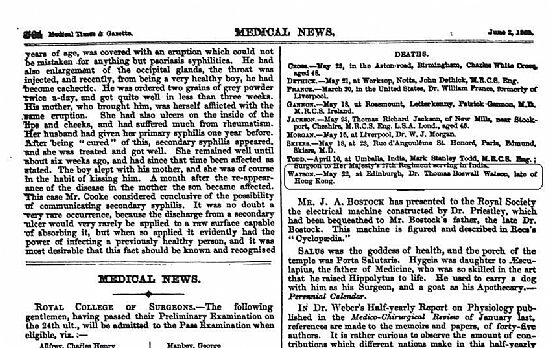
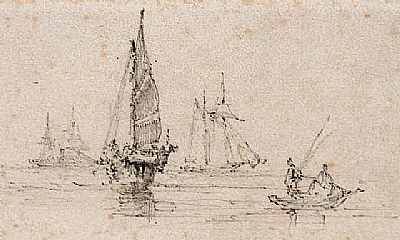
I have also got very interested in travel to and from places that our ancestors settled in. This was naturally always by ship to places like this or South Africa; voyages of many weeks. This small sketch by Thomas Boswell Watson shows both small local boats and the larger ships.

